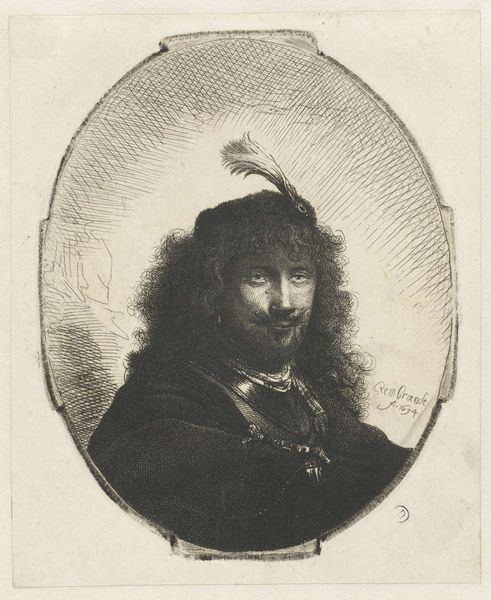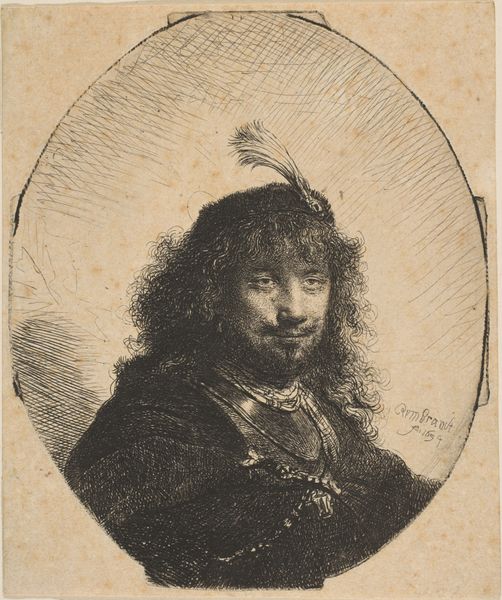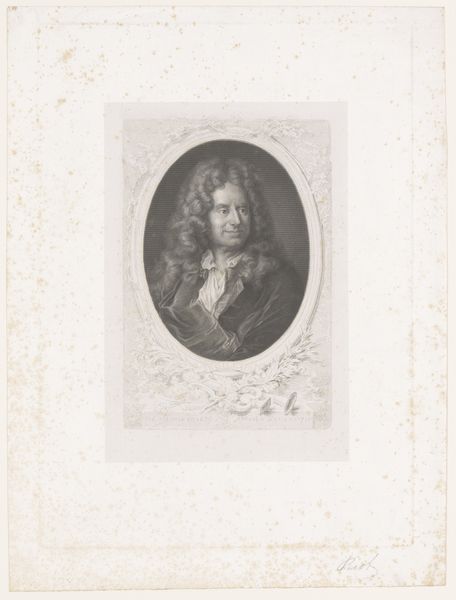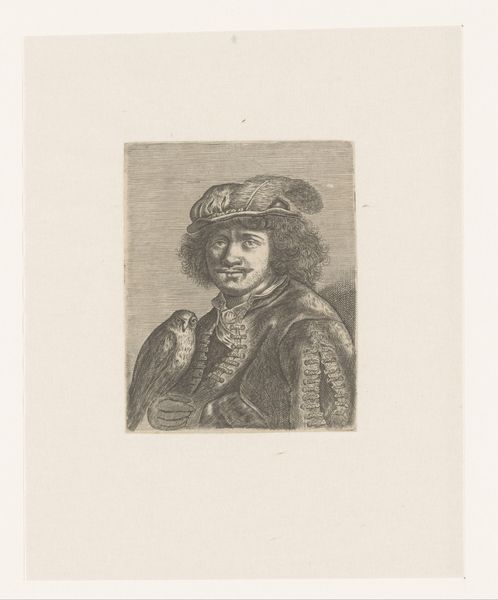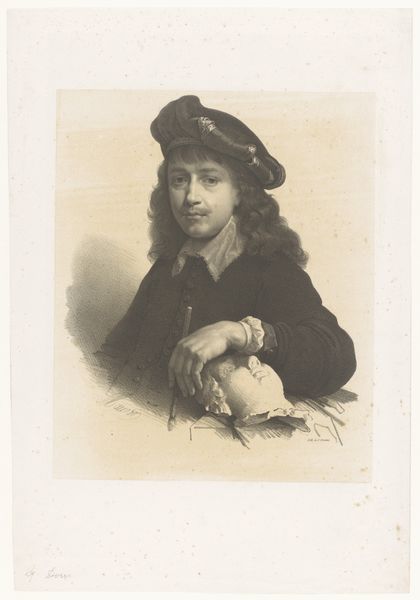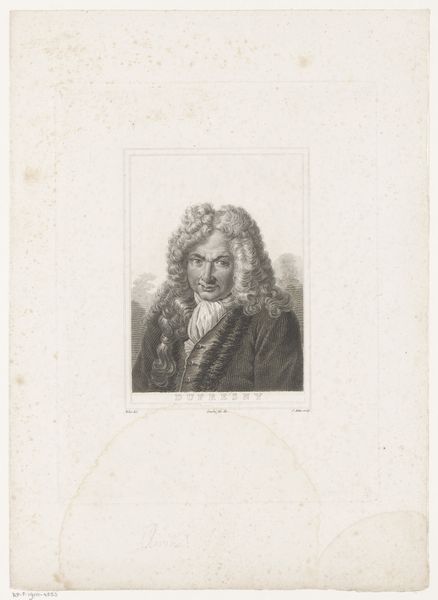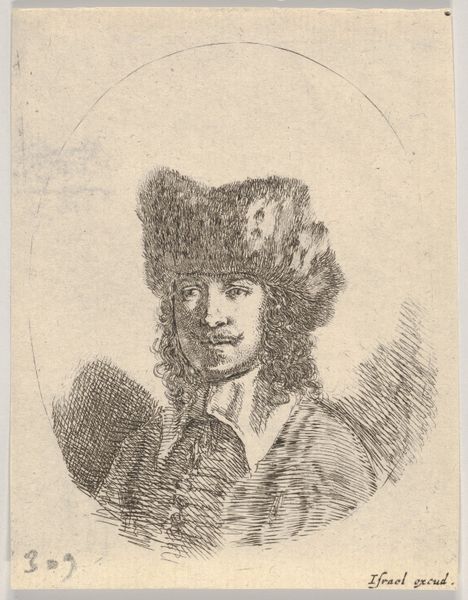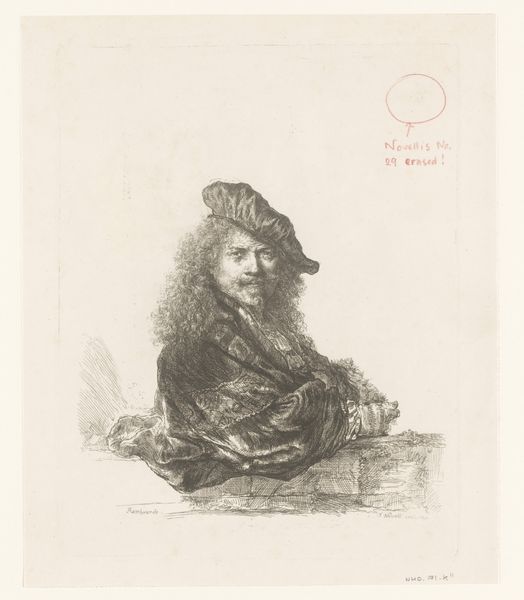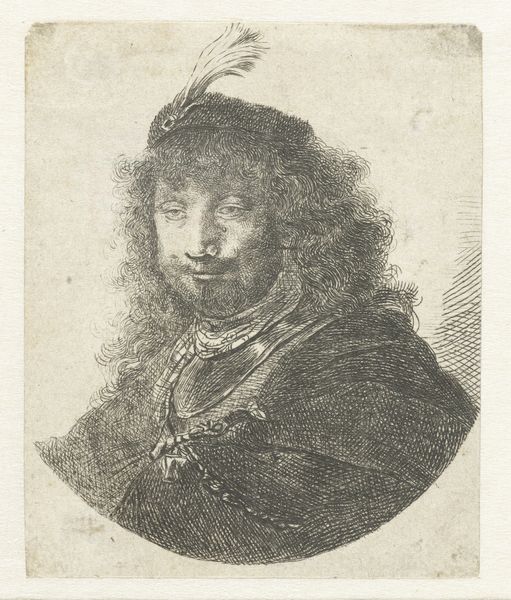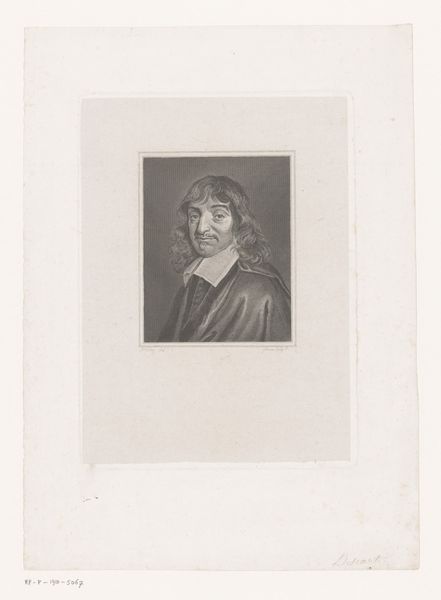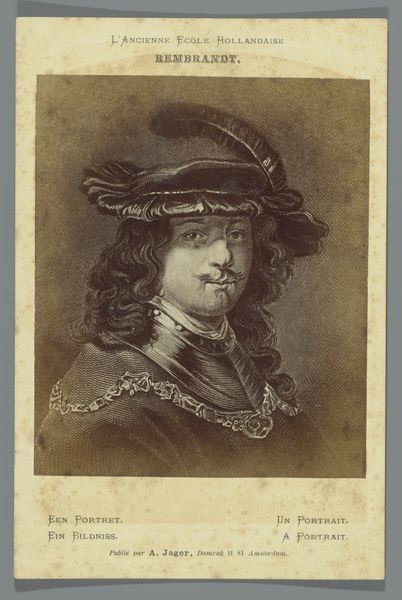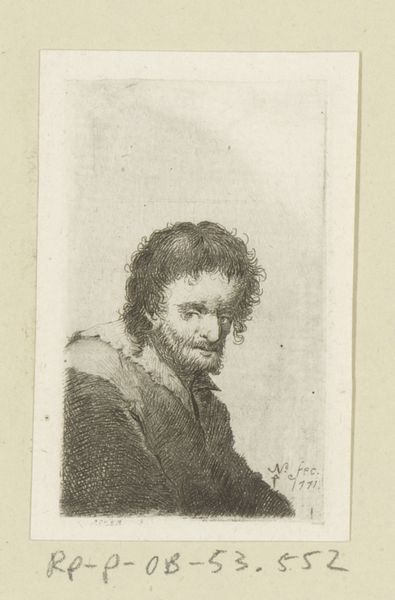
Rembrandt with plumed cap and lowered sabre: three-quarter lenght: afterwards bust in oval 1634
0:00
0:00
print, etching, engraving
#
portrait
#
self-portrait
#
baroque
# print
#
etching
#
history-painting
#
engraving
Dimensions: 100 mm (height) x 108 mm (width) (plademaal)
Rembrandt van Rijn made this etching, "Rembrandt with plumed cap and lowered sabre," in the Dutch Republic, sometime in the mid-17th century. Prints like this one circulated widely, and were collected by a growing public interested in art. Here, Rembrandt presents himself in costume, perhaps as a soldier or nobleman. It's an interesting comment on social mobility, as Rembrandt was the son of a miller, yet he portrays himself in a role associated with higher social classes. The etching technique itself was relatively new, and Rembrandt was a master of it. The dense lines create a rich, tonal effect, mimicking the look of a painting. As art historians, we look at prints like this to understand not only Rembrandt's artistic genius, but also the changing social status of artists and the rise of a commercial art market in the Dutch Golden Age. We can consult period documents like guild records, auction catalogues, and inventories to reconstruct this world. The meaning of this image is thus deeply rooted in the society and institutions of its time.
Comments
No comments
Be the first to comment and join the conversation on the ultimate creative platform.
